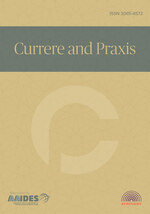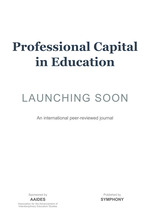Reflection of the iceberg: Key issues and challenges of education in Balochistan
DOI:
https://doi.org/10.70116/298027413Keywords:
Balochistan province, Challenges of education, Key Issues of education, Pakistan education systemAbstract
Education is widely recognized as a key driver of social and economic development. However, in Pakistan's Balochistan province, the education sector faces numerous challenges and issues that hinder its progress and development. This paper aims to identify and analyze the key issues and challenges facing the education sector in Balochistan. The research is based on a comprehensive review of the relevant literature, policy documents, and reports. The study identifies several key challenges, including inadequate infrastructure and facilities, inadequate funding, low teacher qualifications and training, high dropout rates, gender disparity, and limited access to education. Moreover, political instability, security concerns, and cultural barriers further exacerbate these challenges. The study proposes several recommendations to address these challenges, including increasing funding and investment in the education sector, improving teacher training and professional development programs, enhancing governance and management of schools, implementing targeted interventions to address gender and social disparities, and participation in education reform initiatives.
Downloads
References
Ahmad, I., Ali, A., Khan, I., & Khan, F. A. (2014). Critical analysis of the problems of education in Pakistan: Possible solutions. International Journal of Evaluation and Research in Education, 3(2), 79-84
Atif, K., Ullah, M. Z., Afsheen, A., Naqvi, S. A. H., Raja, Z. A., & Niazi, S. A. (2016). Son preference in Pakistan; a myth or reality. Pakistan Journal of Medical Sciences, 32(4), 994.
Azeem, M,. & Ismat, H. (2016), Education and development of Pakistan: A study of current situation of education and literacy in Pakistan. US-China Education Review, 6(11), 647-654.
Balochistan Bureau of Statistics. (2020). Balochistan education statistics 2019-20 [Report]. March 2, 2023 Retrieved from http://www.emis.gob.pk/website/BlochistanEducationStatistics.aspx
Balochistan Development Statistics. (n.d.). Number of government primary, middle and high schools by teaching staff in Balochistan. Retrieved February 8, 2023, from http://emis.gob.pk/Uploads/DETAIL%20OF%20GOVERNMENT%20SCHOOLS%20IN%20BALOCHISTAN.pdf
Balochistan Education Foundation. (2019). List of private schools. Retrieved February 2, 2023, from https://www.bef.org.pk/bpeirra/
Balochistan Education Statistics 2019-20. (2020). List of enrollment figures for boys and girls in Balochistan between 2016 and 2019. Retrieved February 7, 2023, from http://www.emis.gob.pk/Uploads/BalochistanEducationStatistics/Balochistan_Education_Statistics_2019-20.pdf
Balochistan education sector plan 2013-2018. (2013). Balochistan education department. Retrieved March 7, 2023, from http://www.emis.gob.pk/Uploads/Balochistan%20Education%20Sector%20Plan.pdf
Balochistan Education Sector Plan 2020-2025. (n.d.). Planning and development department government of Balochistan. Retrieved January 10, 2023, from http://emis.gob.pk/Uploads/BESP2020-25.pdf
Barrett, P., Davies, F., Zhang, Y., & Barrett, L. (2015). The impact of classroom design on pupils' learning: Final results of a holistic, multi-level analysis. Building and Environment, 89, 118-133.
Brock, C., & Alexiadou, N. (2013). Education around the world: A comparative introduction (Vol. 13). A&C Black.
Chaudhry, I. S., & Rahman, S. (2009). The impact of gender inequality in education on rural poverty in Pakistan: an empirical analysis. European Journal of Economics, Finance and Administrative Sciences, 15(1), 174-188.
Creswell, J. W., & Poth, C. N. (2016). Qualitative inquiry and research design: Choosing among five approaches. Sage Publications.
Damon, A., Glewwe, P., Wisniewski, S., & Sun, B. (2016). Education in developing countries-what policies and programmes affect learning and time in school?. Expertgruppen För Biståndsanalys (EBA). Retrieved March 3, 2023, from https://eba.se/wp-content/uploads/2016/05/Rapport-201602-Education-in-developing-coutries.pdf
Darling-Hammond, L., Hyler, M. E., & Gardner, M. (2017). Effective teacher professional development. Retrieved April 1, 2023, from https://bibliotecadigital.mineduc.cl/bitstream/handle/20.500.12365/17357/46%20Effective_Teacher_Professional_Development_REPORT.pdf?sequence=1
Deniz, Ü. (2022). Main problems of higher education and 1uests for reform in Turkey. Anatolian Journal of Education, 7(2), 173-192.
Education for All (EFA) Global Monitoring Report. (2015). Education for all 2000-2015: Achievements and challenges. UNESCO Publishing. Retrieved March 2, 2023, from https://reliefweb.int/report/world/education-all-global-monitoring-report-2015-education-all-2000-2015-achievements-and?gclid=CjwKCAjwscGjBhAXEiwAswQqNNBAa3O8O_QzQyZXV8xsm4H2ogxnBG7ceUIF4-AsKnUr_AHuK2zQWRoC2kYQAvD_BwE
Faisal, R. (2013). Causes of low quality education in Balochistan. Retrieved January 7, 2023, from http://web.uob.edu.pk/uob/Journals/Balochistan-Review/data/BR%2001%202013/41-46%20CAUSES%20OF%20LOW%20QUALITY%20EDUCATION%20IN%20BALOCHISTAN,%20Faisal%20Raza.pdf
Federal Ministry of Education. (2009). National education policy government of Pakistan. Retrieved March 12, 2023, from https://itacec.org/document/2015/7/National_Education_Policy_2009.pdf
Fund, P. P. A., & Mauve Area, G. (2019). Third party validation of annual environmental and social monitoring/assessment (6th Phase). Retrieved February 2, 2023, from https://www.ppaf.org.pk/doc/ESM-TPVs/6th-TPV-Final-Report.pdf
Gopal, B., Akhilesh, S., Shukla, S., & Shukla, G. (1997). Research Journal of Social and Life Sciences. Retrieved April 3, 2023, from https://www.researchgate.net/profile/Mamonah-Ambreen/publication/259480802_Provision_of_Better_Educational_Facilities_in_Rural_Balochistan_Micro_Analysis_of_World_System_Theory_in_Anthropological_Perspective/links/0046352c19a745a0a1000000/Provision-of-Better-Educational-Facilities-in-Rural-Balochistan-Micro-Analysis-of-World-System-Theory-in-Anthropological-Perspective.pdf
Government of Balochistan. (2018). Five years of education reforms Balochistan 2013-2018. Retrieved February 26, 2023, from https://www.researchgate.net/publication/342083608_Balochistan_Five_Years_of_Education_Reforms_2013-18_Wins_losses_and_challenges_for_future
Government of Balochistan. (2021). Balochistan education statistics 2019-20. Retrieved Feb 1, 2023 from http://www.emis.gob.pk/Uploads/BalochistanEducationStatistics/Balochistan_Education_Statistics_2019-20.pdf
Government of Pakistan. (2017). Pakistan education statistics 2015-16. National education management information system, ministry of federal education and professional training. Retrieved January 13, 2023, from http://library.aepam.edu.pk/Books/Pakistan%20Education%20Statistics%202015-16.pdf
Heyneman, S. P. (2001). General introduction: Global issues in education. Peabody Journal of Education, 76(3-4), 1-6.
Khan, F., Fauzee, O., & Daud, Y. (2016). Teacher training, problems and the challenges: a comparative study between India and Pakistan. Gomal University Journal of Research, 32(1), 1-12.
Kolb, D. A. (1975). Toward an applied theory of experiential learning. Theories of Group Processes. Retrieved March 15, 2023, from https://digitalcommons.unomaha.edu/cgi/viewcontent.cgi?article=1123&context=slceslgen
Küçükali, R., & Coşkun, H. C. (2020). Pakistan eğitim sistemi ve okullara yönetici atama kriterlerinin incelenmesi. Uluslararası Liderlik Çalışmaları Dergisi: Kuram ve Uygulama, 3(3), 86-98.
Masood, S., & Ambreen, M. (2016). Problems and issues in Pakistani education. Education in Pakistan, 207. Retrieved January 18, 2023, from https://online.aiou.edu.pk/LIVE_SITE/SoftBooks/6405.pdf#page=214
Memon, G. R., Joubish, M. F., & Khurram, M. A. (2010). Education in Pakistan: The key issues, problems and the new challenges. Middle-East Journal of Scientific Research, 6(6), 672-677.
Ministry of Education. (2009). Education system in Pakistan. Government of Pakistan. Retrieved March 9, 2023 from https://planipolis.iiep.unesco.org/sites/default/files/ressources/pakistan_national_education_policy_2009.pdf
Ministry of Education. (2014). National Education Census 2012-13 Pakistan. Academy of educational planning and management. Islamabad, Pakistan. Retrieved March 8, 2023 from http://library.aepam.edu.pk/Books/Pakistan%20Education%20Statistics%202012-13.pdf
Mustafa, S., Khan, M. S. A., & Jameel, K. (2016). Women education in Pakistan: Is the level enough for empowerment. International Journal of Scientific & Engineering Research, 7(8), 1747-1753.
Naz, S. (2003). The status of female education in rural Balochistan. Retrieved February 17, 2023, from https://ecommons.aku.edu/cgi/viewcontent.cgi?article=1066&context=book_chapters
Organization for economic cooperation and development (OECD). (2012). Equity and quality in education: Supporting disadvantaged students and schools. Retrieved April 1, 2023, from https://www.oecd.org/education/school/50293148.pdf
Pakistan Coalition for Education. (2021). Status of girls education in Balochistan. Retrieved February 7, 2023 from https://page.org.pk/wp-content/uploads/2021/11/Balochistan-Report.pdf
Pakistan, A. S. E. R. (2015). Annual status of education report: Aser Pakistan 2015 national (urban). In Lahore, Pakistan: South Asian Forum for Education Development (Vol. 30).
Provincial census report balochistan. (2017). Pakistan bureau of statistics, government of Pakistan. Retrieved March 3, 2023 from https://www.pbs.gov.pk/content/final-results-census-2017
Qureshi, S. (2002). Decentralization to district level. Ministry of Education, Islamabad, Pakistan, 31-40.
Rasheed, Z., Hussain, B., Ijaz, A., & Hashim, M. (2021). The level of girls education in rural areas of Pakistan subject to socio-economic, demographic and schooling characteristics: Count data models approach. Ilkogretim Online, 20(5), 7451-7465.
Reayat, N. A. U. M. A. N. (2020). The problems of legal education in Pakistan: Teaching and learning, curriculum, and assessment methods. International Review of Management and Business Research, 9(4), 367.
Report on Pakistan Education Statistics. (2016-17). National education management information system (NEMIS), Ministry of federal education and professional training, government of Pakistan. Retrieved March 12, 2023, from http://library.aepam.edu.pk/Books/Pakistan%20Education%20Statistics%202016-17.pdf
Shah, D. (2003). Country report on decentralization in the education system of Pakistan: Policies and strategies. Islamabad: Academy of Educational Planning and Management,(Islamabad), Ministry of Education.
Siddiqui, K. A., Mughal, S. H., Soomro, I. A., & Dool, M. A. (2021). Teacher training in Pakistan: Overview of challenges and their suggested solutions. IJORER: International Journal of Recent Educational Research, 2(2), 215-223.
Status of Girls Education in Balochistan 2021. (n.d.). Pakistan coalition for education. Retrieved April 11, 2023, from https://plan-international.org/publications/status-girls-education-balochistan-2021
Tusińska, M. (2020). Inequality of opportunity–gender bias in education in Pakistan. Nierówności Społeczne a Wzrost Gospodarczy, (63), 233-245.
UNESCO, UNICEF, & World Bank. (2021). The state of the global education crisis: A path to recovery. Retrieved December 3, 2023, from https://www.worldbank.org/en/topic/education/publication/the-state-of-the-global-education-crisis-a-path-to-recovery
UNESCO. (2014). Teaching and learning: Achieving quality for all. Education for all global monitoring report. Retrieved January 24, 2023 from https://reliefweb.int/report/world/education-all-global-monitoring-report-2014-teaching-and-learning-achieving-quality-all?gclid=CjwKCAjwxr2iBhBJEiwAdXECw7b3KwCYIAEfrdtMRfWsP5hGWsN4a3MesfG1w01egw-ugvsWidLF5xoCYckQAvD_BwE
UNESCO. (2015). Education for All 2000-2015: Achievements and challenges. UNESCO. Retrieved April 9, 2023 from https://reliefweb.int/report/world/education-all-global-monitoring-report-2015-education-all-2000-2015-achievements-and?gclid=CjwKCAjwxr2iBhBJEiwAdXECw_RLUQYVeWJE55OdM_1MpkSXmfyfQpI_5l6Zwi7ENhDe66s3B9VbVBoCEz8QAvD_BwE
UNESCO. (2019). UNESCO Pakistan country strategic document 2018‐2022. Retrieved from https://en.unesco.org/sites/default/files/ucsd.pdf.
World Bank. (2022). The State of global learning poverty: 2022 update. Retrieved April 23, 2023 from https://reliefweb.int/report/world/state-global-learning-poverty-2022-update?gclid=CjwKCAjwxr2iBhBJEiwAdXECw0_PktyReCYiZIGZnJcQeT0NP-icKqEMwMf2OTLtJrNuY1q8pQA2BhoCfacQAvD_BwE
Downloads
Published
How to Cite
Issue
Section
License
Copyright (c) 2023 Symphony

This work is licensed under a Creative Commons Attribution 4.0 International License.














